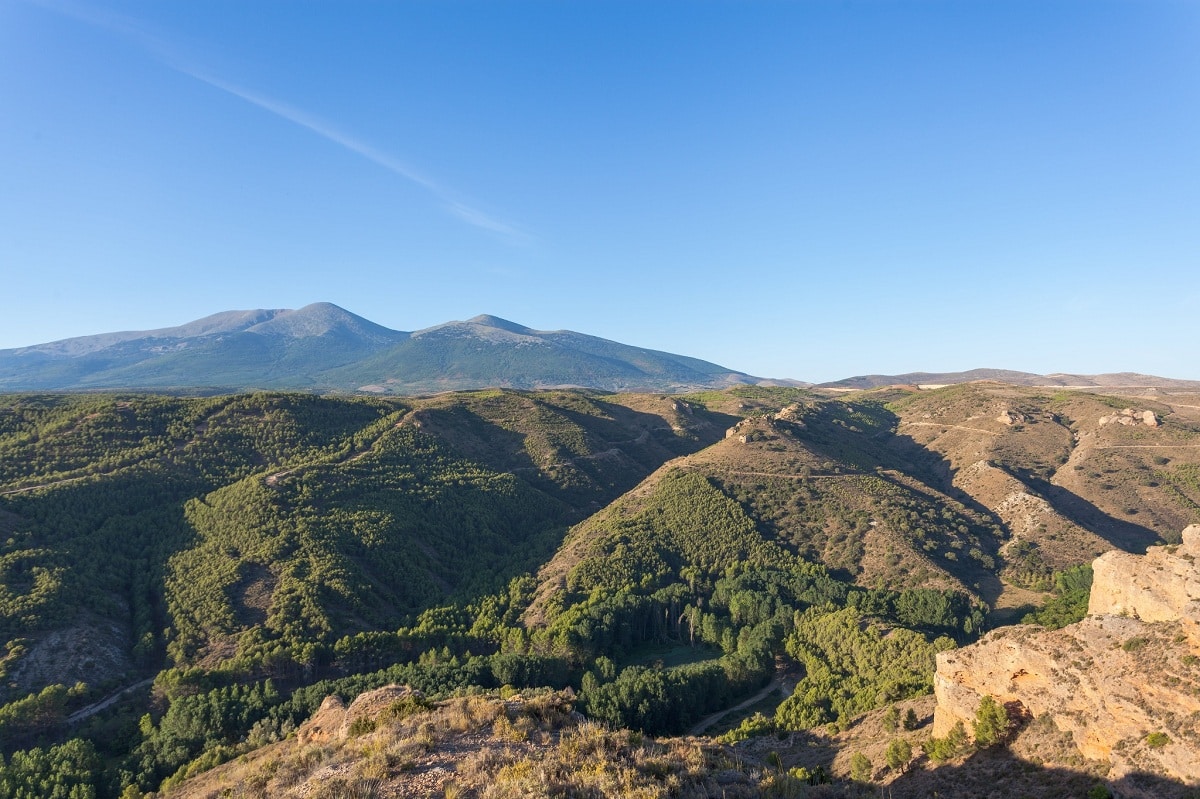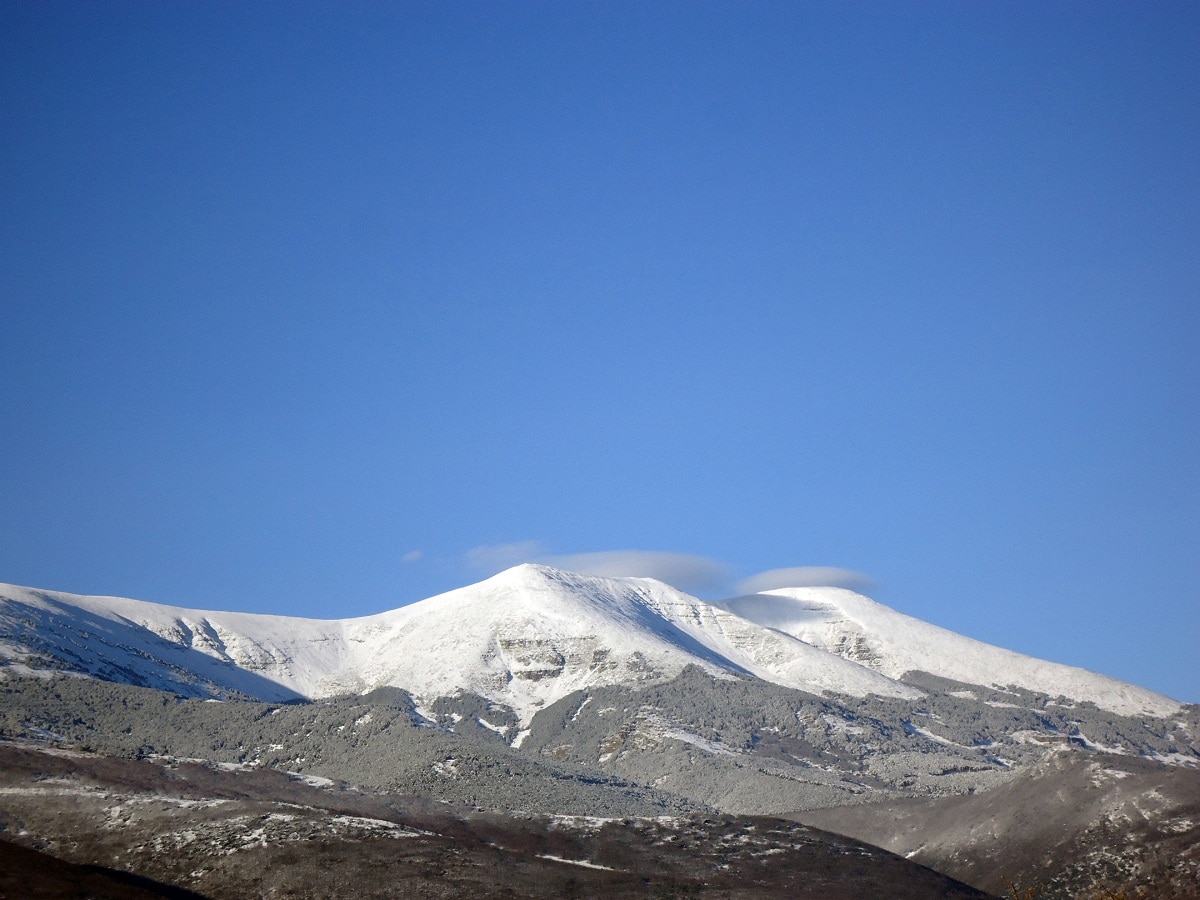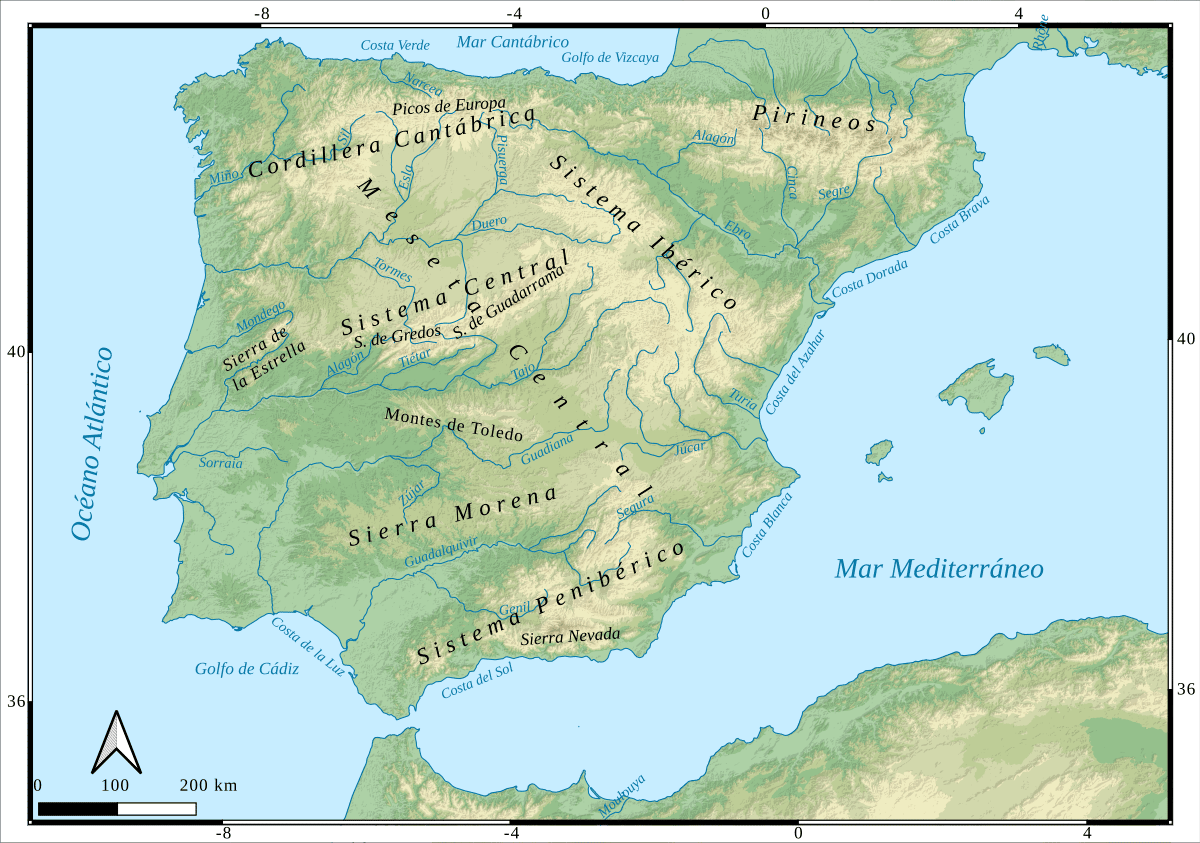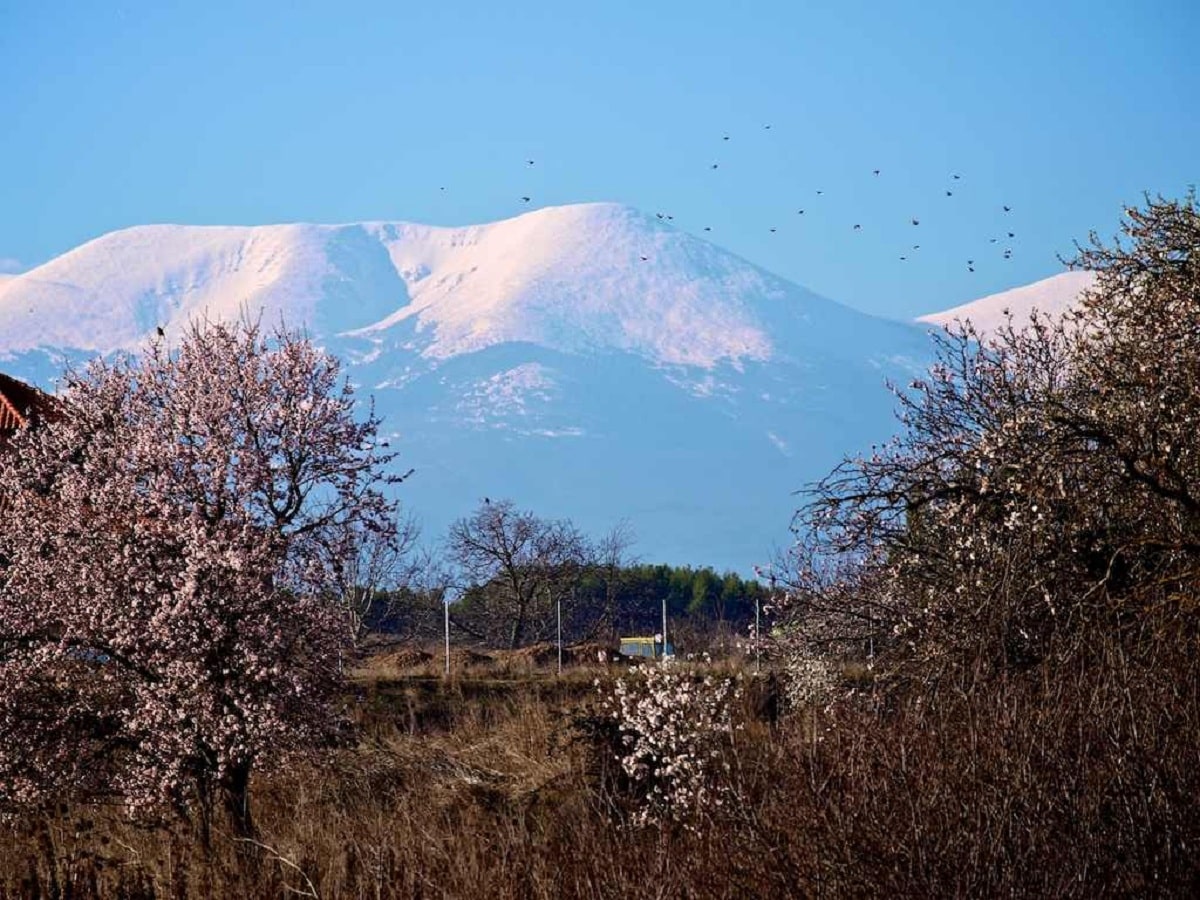
El Iberian System It is one of the main mountain systems in Spain. It is located in the central region of the Iberian Peninsula, but within the Valencian Community to the east, reaching almost to the Mediterranean coast, a vast and complex area of mountains. From a hydrological point of view, this system is crucial in the Iberian Peninsula, as it separates the hydrological basins of most of the main rivers in Spain and Portugal.
In this article we are going to tell you about all the characteristics and importance of the Iberian System.
Key features

The western end of the Iberian System is delimited by the Central Plateau, which separates it from the Ebro Valley and the Mediterranean coast. The system is located more than 500 km to the northwest-southeast between the Ebro valley and the central plain of the Meseta, from the La Breba corridor in the province of Burgos, near the Cantabrian Mountains, to the Mediterranean near Valencia, in the south and east Tortosa and the Ebro Delta. Most of the Iberian system is located in the southern half of Aragon. The Prebético system rises to the south of the extreme south of the Iberian system.
The geology of the Iberian system is complex because it is difficult to define it as a homogeneous system. It is formed by a series of irregular and heterogeneous mountains, massifs, plateaus and depressions without a clear common petrological composition. Some parts of the system are geologically isolated, interrupting the continuity of the whole, connecting with other parts through plateaus of different heights.
Large areas of the Iberian Cordillera have been severely depopulated since the XNUMXth century. There are many ghost towns or abandoned towns scattered throughout different parts of the Iberian system, especially in the province of Teruel. Today, a large number of surviving towns only have remnant populations. In some cases, many residents were not natives, but immigrants from Romania were employed as laborers in agricultural activities.
The exodus from rural Spain increased after General Franco's stabilization plan in 1959. The population fell drastically and people moved to industrial areas in the big cities and coastal towns where tourism had multiplied. Other reasons for mass emigration were the abandonment of traditional agricultural practices by local youth, such as sheep and goat farming, which were the backbone of the village economy, and lifestyle changes that spread through the Spanish countryside in the second century.
Fauna

Massive depopulation favors fauna, which is why one of the last European colonies of griffin condors has been found in the Iberian system. Wolves and eagles are also more common in the lonely highlands. Among the mammals, the mountain goat, the roe deer, the wild boar, the European badger, the common gene, etc., have many habitats in these desolate mountains.
The most common reptiles in the Iberian system are Lepidoptera, Psammodromus algirus, Psammodromus hispanicus, Podarcis Muralis and Podarcis hispánica, Chalcides chalcides, Chalcides bedriagai and Anguis fragilis are less common. The snakes of these mountains are Natrix maura, Natrix natrix, Malpolon monspessulanus, Elaphe scalaris, Coronella girondica, Coronella austriaca, and Vipera latastei.
Some amphibians are abundant near ponds and streams throughout the system, such as Rana perezi, Bufo bufo, Bufo calamita, Alytes obstetricans, Triturus marmoratus and Lissotriton helveticus, the latter also at high altitudes, in intermittent or permanent water bodies. Others are less common, such as Hyla arborea and Salamandra salamandra, but are still widespread, especially in moist forest areas. However, Pleurodeles waltl is rarely found in the mountains. Aquatic invertebrates, including Austropotamobius pallipes, crayfish, and certain fish such as Salaria fluviatilis and Cobitis paludica, are common in the upper reaches of the Sistema Ibérico river. Some mountain streams have been replanted for trout.
In the dry steppe of some villages in the system, traditional livestock activities that were very important in the center of the Iberian Peninsula still survive. There were also some hunters who visited some mountain ranges, mainly those closest to the city, especially on weekends.
Vegetation of the Iberian System
Swamps are rare in the Iberian Peninsula, but high-altitude swamps form in the few areas of the Iberian system where water remains stagnant, such as Bronzales, near Orihuela del Tremedal and known as Por the region of Fuente del Hierro, the altitude ranges between 1.400 and 1.550 meters. The plants that grow in these bogs are mainly hairy moss, Erectus vulgaris, Pinguicula vulgaris, Vaccinium myrtillus, Calluna vulgaris, and Drosera rotundifolia, a carnivorous plant that does not grow in south western Europe.
Cordilleras of the Iberian System

The Iberian system includes several mountain ranges and massifs:
- For the North: Sierra de la Demanda, Sierra de Neila, Mesa de Cebollera and Picos de Urbión, to the northwest, Sierra de Alcarama, Sierra de Peñalmonte, Sierra de Moncalvillo and Moncayo, isolated to the north, always have peaks of snow in winter, La Sierra Nava Alta with its extension to the east.
- West: Smaller and drier mountains near the transition zone of the central system, such as Sierra de Perdices, Sierra Ministra, Sierra de Caldereros (Águila 1.443 m), Sierra de Pardos, Sierra de Miñana, Sierra de Solorio, Sierra de Selas (Aragoncillo 1.517 m) and Parameras de Molina (High Landmark 1.408 m).
- Central: Numerous mountains in the center of the system, such as Sierra de la Virgen, Sierra de Vicort, Sierra de Algairén, Sierra de Santa Cruz, Sierra de Cucalón, Sierra de Herrera, Sierra de San Just, Sierra de Lidón and Sierra Palomé Pull, etc.
- Southwest: Serranía de Cuenca, Sierra Menera, Sierra de Albarracín, Montes de Picaza (Colmenarejo 1426 m), Montes Universales and Sierra de Mira.
- Southeast: Sierra de Javalambre, Sierra del Toro, Sierra de Gúdar, Sierra de Mayabona, Sierra de Camarena, Sierra de Sollavientos, Sierra del Rayo and Sierra de Pina.
- East: set of mountains that enter the Mediterranean Sea, among which are the Maestrat or Maestrazgo and Penyagolosa massifs, Sierra de la Lastra, Sierra de los Caballos, Sierra de Garrocha, Sierra de la Canada, Sierra Carrascosa, Ports de Morella , Serra de la Creu, Serra d'En Segures, Serra d'en Galceran, Serra d'Esparreguera, Serra de Vallivana, Serra d'En Celler, Serra del Turmell, Serra de l'Espadella and Moles de Xert, and Talaies d ' Alcalà, the Serra de la Vall d'Àngel, the Sierra de Cervera, the Serra de Sant Pere, the Serra Calderona and the foothills of the Serra d'Espadà at the eastern end.
- Northeast: a complex mountainous region linked to the ancient mountains of the Catalan coast, including the mountains of Tortosa-Bercet and Benifasa.
I hope that with this information you can learn more about the Iberian System and its characteristics.